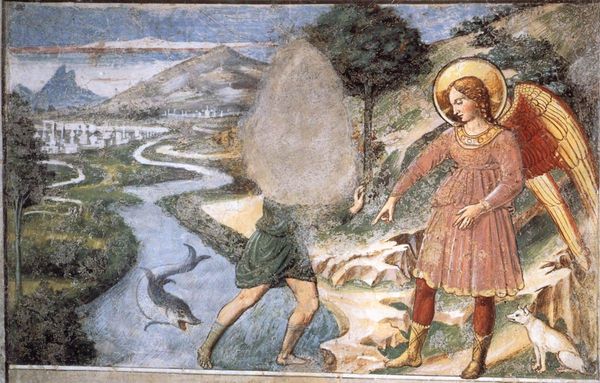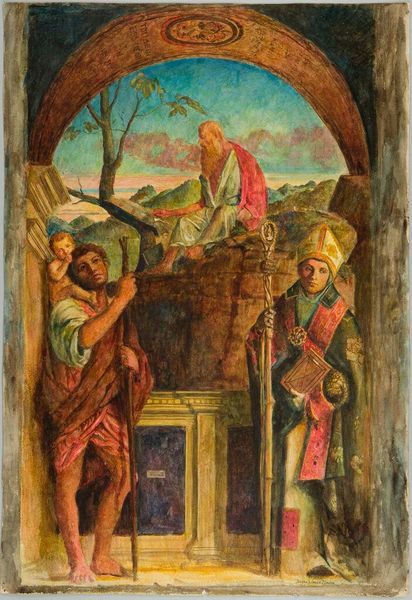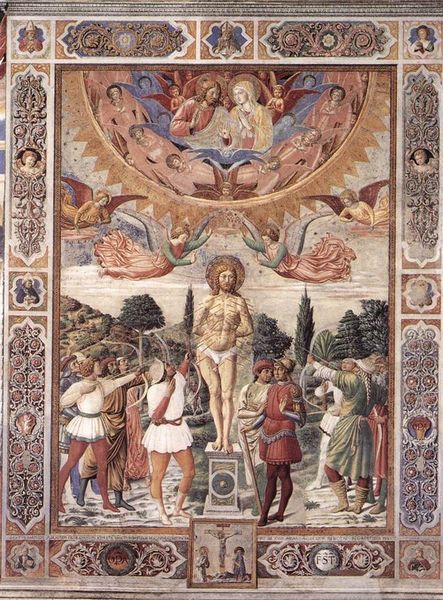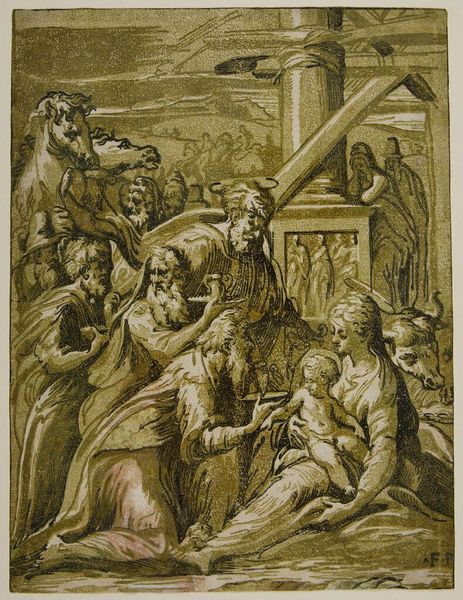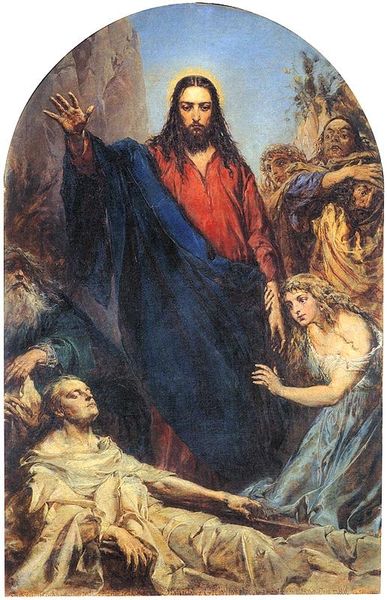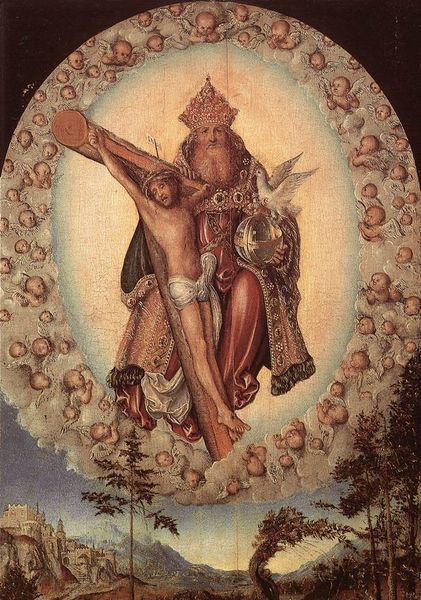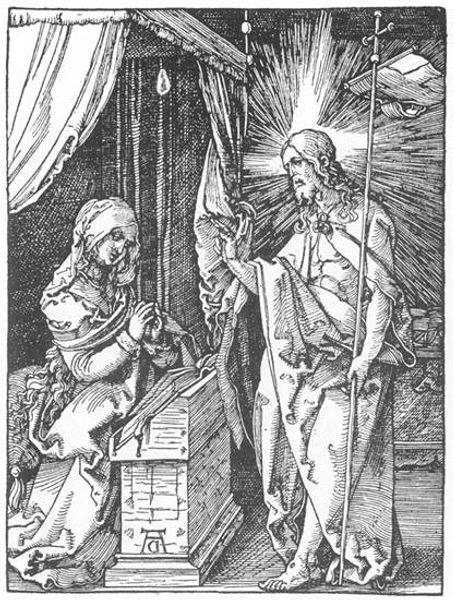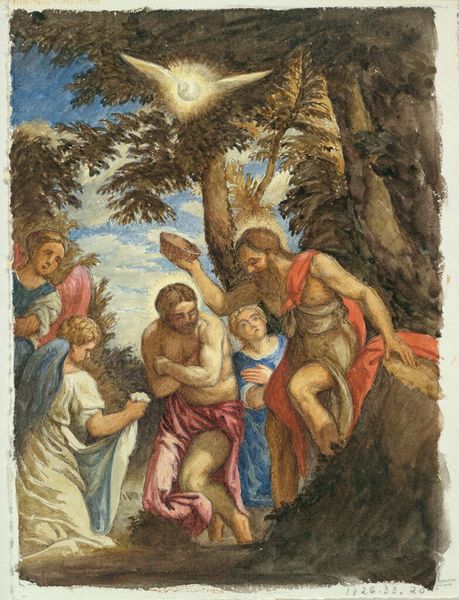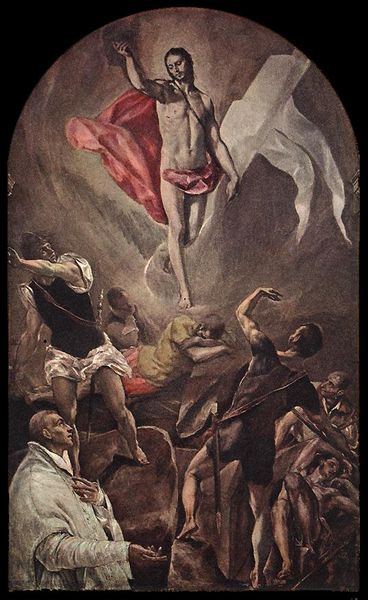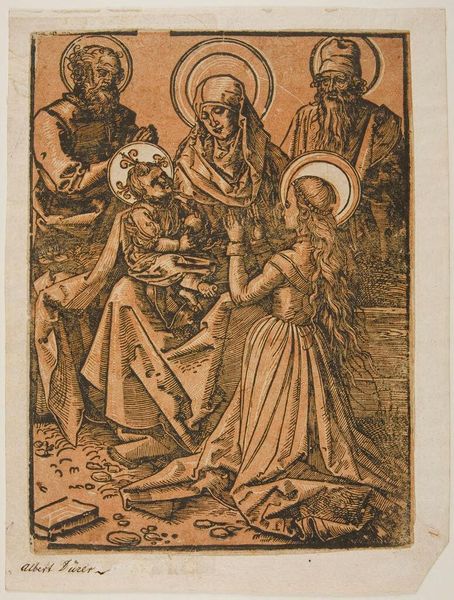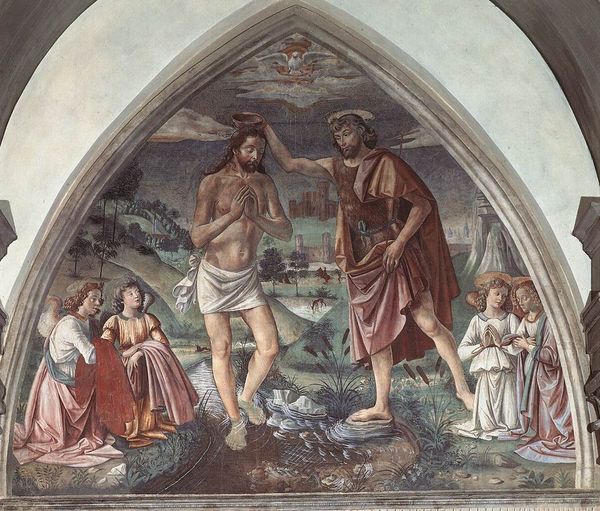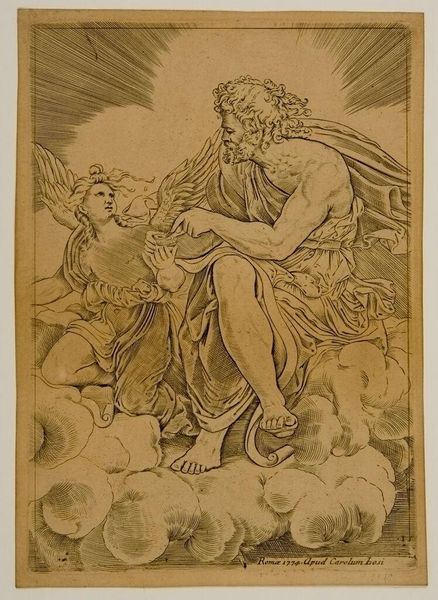
drawing, watercolor
#
drawing
#
art-nouveau
#
narrative-art
#
figuration
#
watercolor
#
coloured pencil
#
art nouveau
#
watercolour illustration
#
watercolor
Copyright: Public Domain: Artvee
Curator: Walter Crane's watercolor and colored pencil drawing, "The Strangers in the Village," created in 1893, is certainly striking. What are your initial thoughts on the artwork’s visual qualities? Editor: The use of color, the delicate lines – it’s like stepping into a classical frieze animated with the anxieties of unwanted visitors. The somewhat muted palette juxtaposed with the violent dynamism of the dogs and children creates an intriguing tension. Curator: Indeed, Crane was deeply engaged with the revival of classical themes, but within a context of late Victorian social concerns. The work seems to illustrate a moment of disruption to community cohesion. I believe he would like it to communicate a universal and timeless struggle between hospitality and hostility, perhaps reflected in the era’s evolving attitudes to outsiders in the modern cities. Editor: I see that, but formally, it's interesting how Crane balances the chaos on the left with the serene, almost stoic figure on the right. Notice the clear demarcation and division of pictorial space into zones that signal both welcome and fear. I think this compositional strategy mirrors the very dilemma the painting explores. Curator: Yes, Crane was committed to social reform, particularly championing socialist ideas through his art. "The Strangers in the Village" appears to touch on fears surrounding migration and otherness at a time of enormous population shift toward industrial centres. The dogs are powerful symbols representing societal aggression directed toward outsiders. The crowd of children and other village folks echo that violence by cheering and participating in it. Editor: The tension between line and color seems equally considered. There is a graphic quality to the rendering, combined with the washiness of the watercolor that softens it – are those artistic choices meant to undermine each other to make a deeper symbolic meaning of how the villagers see the "strangers"? I cannot tell for sure. Curator: Possibly. As for the social commentary, I would highlight how it compels us to consider the responsibilities of community and the ethics of welcome, something of vital interest nowadays too. Editor: The enduring quality of Crane's piece is its exploration of pictorial balance and expressive contrasts. Seeing how formal design choices play with underlying emotional impact offers something really quite intriguing.
Comments
No comments
Be the first to comment and join the conversation on the ultimate creative platform.
